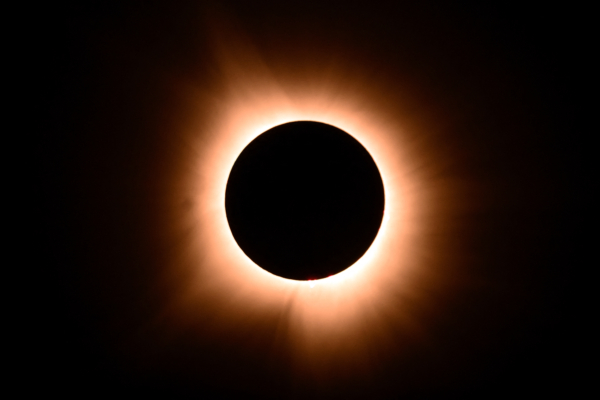European Space Agency (ESA) achieved the world’s first artificial total solar eclipse by conducting high-precision formation flying with two satellites of its Proba-3 mission and blocking the sun, providing scientists with an opportunity for prolonged study of the solar corona.
On June 16, ESA released images of the artificial total solar eclipse and the solar corona created by the two satellites of Proba-3 – the Coronagraph and the Occulter.
The image was captured by the Coronagraph on May 23 using visible light. At that time, the 1.4-meter black disk carried by the Occulter blocked the bright sun, resembling how the moon eclipses the sun during a natural eclipse, while the Coronagraph, aligned with the corona 150 meters away, captured the image.
The inner solar corona in the image appears green, similar to what the human eye sees through a green filter during a natural eclipse. These hair-like structures are displayed using specialized image processing algorithms.
ESA stated that the satellites of Proba-3 performed high-precision formation flying for the first time in their orbit around Earth in March. Without any ground control, the Coronagraph and Occulter flew in a perfect formation for several hours, with a distance of 150 meters between them.
Maintaining consistent formation, the relative positioning error between these two satellites was precisely 1 millimeter – an outstanding achievement made possible through a series of innovative navigation and positioning technologies. To demonstrate their precision, they created an artificial total solar eclipse in orbit during their formation flying.
When the Occulter blocked the sun, the optical instruments on the Coronagraph could study the solar corona, which is otherwise difficult to observe. Scientists previously could only study the solar corona by observing the blurry corona with the naked eye during a total eclipse.
Observing the solar corona is crucial for revealing solar wind (the continuous stream of material released into outer space by the sun) and understanding the operation of coronal mass ejections. Coronal mass ejections are large amounts of particles emitted by the sun almost daily, especially during periods of high solar activity.
These events not only create spectacular auroras in the night sky but also pose a serious threat to modern technology. They can severely disrupt communication, power transmission, and navigation systems on Earth, as seen in May 2024.
The solar corona images released by ESA provide valuable data from this artificial total solar eclipse observation mission for people to see.
Dietmar Pilz, Director of Technology, Engineering, and Quality at ESA, commented that many of the technologies that enabled the satellites of Proba-3 to perform precise formation flying were developed through the agency’s General Support Technology Programme, including the mission itself.
He said, “Seeing these amazing images verifying our technology in the world’s first precise formation flying mission is very exciting.”
The two satellites of Proba-3 were launched in December last year with the purpose of demonstrating precise formation flying and observing the solar corona. They are powered by efficient solar panels as their power source.

